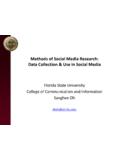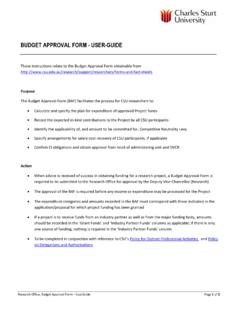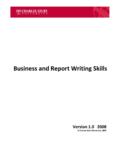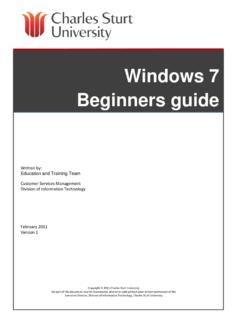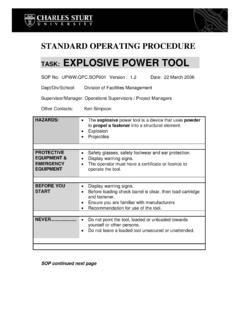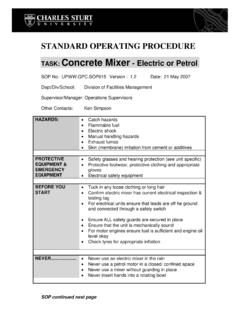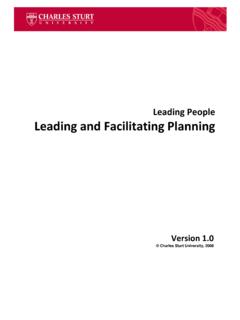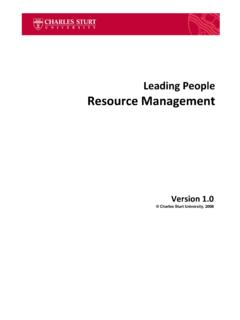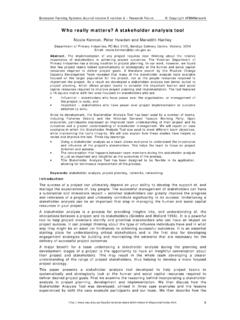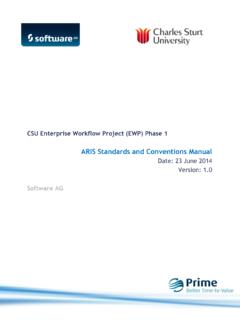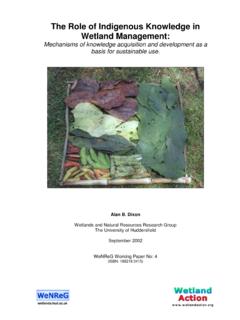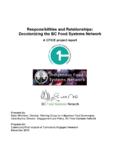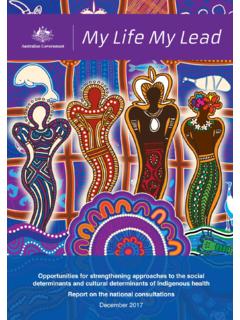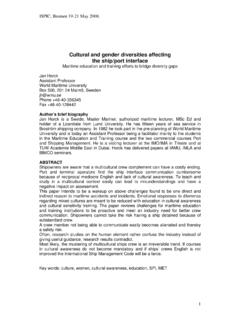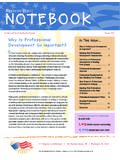Transcription of Guide to working with Indigenous Australian Staff
1 Guide TO working with Indigenous Australian Staff | CHARLES STURT UNIVERSITY PAGE 1 Guide to working with Indigenous Australian StaffContentsIntroduction ..2 Definition of Terms and Accepted Terminology ..2 Indigenous ..2 Aboriginal and Torres Strait Islander People ..2 Inappropriate Terminology ..2 What to be aware of when working with / supervising Indigenous Staff ..3 Communication ..3 Agreement and Yes responses ..3 Family Relationships ..3 Men s and Women s Business ..4 Shame ..4 What you can do in your workplace ..5 Interviewing ..5 Welcoming an Indigenous Staff member ..5 Making expectations clear ..5 Acknowledging the positive ..5 Being aware of leave options ..6 Being aware of employee burnout ..6 Do not assume knowledge ..6 Significant Cultural Events / Dates to be aware of ..7 References ..8 Resource List Guide for working with Indigenous Staff ..9 Guide TO working with Indigenous Australian Staff | CHARLES STURT UNIVERSITY PAGE 2 INTRODUCTIONCSU s relationship with Indigenous communities is a central focus of our commitment to our regions.
2 As an inland university with campuses located in areas of relatively high Indigenous population, CSU has a significant role in providing accessible education for Indigenous students. The University is also working towards increasing employment of Indigenous Staff to support a culturally safe environment and provide role models for Indigenous students, to give non Indigenous students the opportunity to work with Indigenous professionals, to give credibility to the teaching of Indigenous studies, and to provide culturally appropriate professional input to the development of course curricula and many of the Indigenous people who enrol to study at CSU or who come to work at CSU, it may be the first time that someone in their family has engaged in some way with a university. For many non Indigenous Staff providing services to Indigenous students or working with an Indigenous colleague, it may be the first time they have interacted on any significant level with an Indigenous person.
3 Tensions or misunderstanding can occur due to different life experiences, communication styles and cultural backgrounds. This Guide aims to provide an overview of some of the more common cultural differences between Indigenous and non- Indigenous Australians that can impact on the workplace, and advice on how to navigate them. It is important to note, however, that the issues discussed in this Guide will not apply in the same way to everyone. You should take your cue from the person with whom you are interacting. Neither is this Guide comprehensive. You are encouraged to access a range of resources for further information (see Appendix 1).DEFINITION OF TERMS AND ACCEPTED TERMINOLOGYThe terms Indigenous , Aboriginal and Torres Strait Islander are European constructs that have been used to describe First Nation peoples in Australia since the time of colonisation. Prior to this time, Aboriginal and Torres Strait Island people identified themselves by their Country.
4 For example, the Indigenous people of the areas in which CSU s campuses are located described themselves as Wiradjuri, Gandangara, Ngunawal or Biripai (or Biripi) people. Because of the diversity of Aboriginal languages and cultures before colonisation, there is no Aboriginal word that refers to all Aboriginal people in Australia, an Indigenous person is a person who is of Aboriginal or Torres Strait Island descent, who identifies as an Aboriginal or Torres Strait Islander person and is accepted as an Aboriginal or Torres Strait Islander person in the community in which he or she lives or comes and Torres Strait Islander PeopleAboriginal person means a person who is a descendant of an Indigenous inhabitant of Australia but does not include a Torres Strait Islander;Torres Strait Islander means a person who is a descendant of an Indigenous inhabitant of the Torres Strait Islands.(Definition from the Racial Discrimination Act, 1975)The terms Aboriginal person and Torres Strait Islander are not interchangeable and refer to specific groups of Indigenous Australian people.
5 It is important when referring to someone that you do so correctly. If uncertain, it may be simplest to ask and ensure you do not offend by using the incorrect Terminology Historically there has been a range of terms used to describe Indigenous Australians, including: those that attempted to classify according to parentage and skin colour eg: full-blood; half-caste; quarter-caste; quadroon; or part-Aborigine. These are extremely offensive to Indigenous people and should never be used. Likewise the nouns Aborigine or Aborigines or abbreviations such as Abo s should not be such as ATSI; TI; TSI should also be avoided. Instead, use the full term, such as Aboriginal and Torres Strait Islander people or Indigenous Australians. Appropriate terminology acknowledges and respects the humanity of Aboriginal and Torres Strait Islander capitalise the first letter of the descriptors Aboriginal and Torres Strait Islander.
6 It is disrespectful not to do so. It is similar to spelling someone s name without a capital or another country s inhabitants without a further information on use of appropriate language when discussing Indigenous culture or history, see CSU s Communicating without Bias Guidelines ( ) Guide TO working with Indigenous Australian Staff | CHARLES STURT UNIVERSITY PAGE 3 WHAT TO BE AWARE OF WHEN working with / SUPERVISING Indigenous STAFFW hile it is important to be aware of a range of cultural differences that may impact on the workplace, it is just as important to remember that each person is an individual and the differences listed below may not apply to every Indigenous Australian . The observations made below are simply a Guide and people should still be treated as people may communicate in ways that differ from non- Indigenous Australians. It is important to be aware of this to aid mutual respect and understanding and foster a positive and supportive work environment.
7 Keep the following points in mind when engaging in everyday communication in the workplace, when at meetings and when interviewing Indigenous Communication may require a different understanding when working with Indigenous Australians. For example: Silence does not mean that the individual does not understand, but rather that they are listening and thinking and may wait to hear others ideas before expressing their own views. There are times when Indigenous Australians may remain non-committal or they may be awaiting community support or input. Allow for periods of silence in interviews, meetings and general conversation for these reasons. Eye Contact for many non- Indigenous people eye contact is considered a key component of communication. However, for some Indigenous people looking someone straight in the eye may be considered rude or disrespectful. While this is not the case for all Indigenous Australians, it is important to be aware of the cultural context and not apply a negative interpretation when eye contact is avoided.
8 Agreement and Yes responsesIndigenous Australians may often agree or respond with yes when asked questions or confronted on issues. This is due to many years of being raised under a government system that was not supportive of Indigenous Australians and that encouraged them to agree with what was being done, regardless of their beliefs. Agreement often kept Indigenous Australians out of trouble . The impact of such conditioning has continued into the next generations - this is often referred to as trans-generational or inter-generational trauma. Be aware of this and allow time for trust and comfort to develop with Indigenous Staff , trying not to put them in uncomfortable or confronting situations that will result in a standard yes understand more about trans-generational or inter-generational trauma in Indigenous communities / individuals, please refer to the following ofhistory-todayFamily RelationshipsTraditional family relationship are quite complex and differ significantly from non- Indigenous family relationships.
9 Indigenous Australians tend to have extended families and these often go beyond blood and marriage a kinship system which defines where a person fits into the community and decides what rights and responsibilities each person has within that community. (Kinship systems also vary across Indigenous communities). Often Indigenous Australians will refer to Elders or leaders within their community as Aunt or Uncle, even if not blood-related, as a sign of respect. You may also hear Indigenous Australians refer to each other as brother or sister even though not for, and to, family is particularly significant to Indigenous Australians and the flow on from this may impact on the workplace. Family will usually be the number one priority to an Indigenous Australian . Be aware that caring for children and elderly family members, including financial care, health care and general care, is often shared within extended family and community.
10 This means your Staff member will likely have more responsibility outside their nuclear family. The potential for cultural differences in family responsibilities is acknowledged by the CSU Enterprise Agreement definition of immediate family , which includes the qualification that other kinship and family networks may be considered on a case by case basis when interpreting what is meant by TO working with Indigenous Australian Staff | CHARLES STURT UNIVERSITY PAGE 4 Family responsibility and absences from work due to the breadth and depth of responsibility to family in Indigenous culture, there is the possibility that there may at times be recurrent or unexplained absences from the workplace, or someone may repeatedly turn up late to work without explanation. Support or care for family may take priority over attending work. In circumstances where this happens, it is important to address the issue early on to prevent any potential for deterioration in working relationships.
